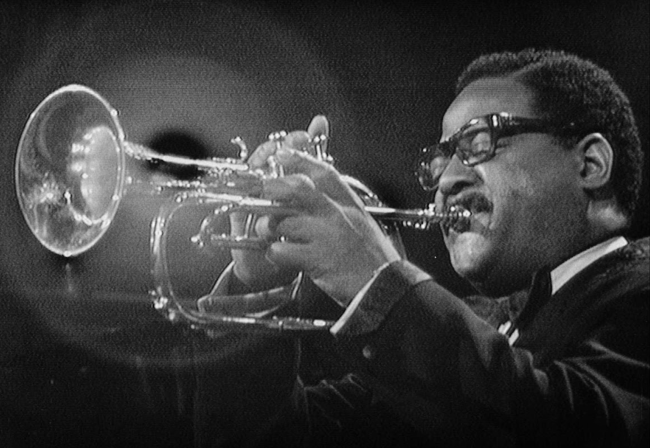The Art of Soulful Listening
As a teenager, I listened to jazz so deeply that an outsider looking in might have thought that my life depended on it. Looking back, I now realize that the music was nourishment for my very soul.
In my sophomore year of high school in 1979, I had an epiphany while witnessing my peers playing their hearts out at a year-end concert. I had been exposed to jazz through my parents' record collections, but what ignited a spark of musical obsession was being moved by my high school stage band performing a range of sounds and styles, from the fusion of Weather Report to the sophisticated soft-rock-pop of Steely Dan as well as classics by Count Basie and Duke Ellington. After playing alto sax in that very band senior year, I matriculated at Hamilton College, where I minored in Music and for three years hosted a jazz radio show on campus. My life was transformed in April 1984 by the good fortune of playing Duke’s “Squeeze Me But Please Don’t Tease Me” with Ellington alumnus Clark Terry.
Clark Terry
Yet the foundation for those pivotal in-person experiences was laid by hours upon hours of listening to jazz on records and the radio in high school. Waking up to the music on WRVR, or listening to cassette tapes with songs like Chick Corea’s “High Wire – The Aerialist,” with a soulfully fluid solo by Joe Farrell ringing in my ears as I walked to the bus stop, I would end the day by tuning into WBGO, where, say, a take of Charlie Parker’s rendition of “Embraceable You” gently transported me into a chromatic dreamland.
The more I listened, the more I recognized patterns in and devices of the music. The more I listened, the more I’d play by focusing on one instrument at a time, then two, then three, and so on, which attuned my ears to nuances that amplified the brilliance and magic that captivated me. Little did I realize that I was developing what musicians call Big Ears, and paving a road to what Jewel and I, via the Jazz Leadership Project, call soulful listening.
Soulful listening is a dynamic act of thinking and feeling together, which opens the way to collective meaning and shared understanding. Unlike status quo listening that focuses merely on information exchange, soulful listening is generative, creating a zone of emergence and transformation.
Dimensions of Soulful Listening
Intentionality and Attention
As we say in our workshops, soulful listening is characterized by "high intention" that guides "attention" to build relational harmony based on trust. This intentionality transforms listening from a passive act to an active one, requiring conscious commitment and focus.
Future-Oriented Receptivity
Soulful listening involves a future-oriented receptivity beyond the present moment to what desires to emerge. It's not just about hearing what’s being said, but also sensing potentialities through the exchange. Musicians who play together for a long time, as with couples in a deep groove of attunement, can sense a shared future, hearing and seeing around corners together.
Deeper Inner Silence
At its core, soulful listening requires what Jewel calls "developing more profound silences in yourself." This inner quietude allows you to slow your mind and create space to hear beneath the words to their true meaning. You suspend your internal dialogue, judgments, and the urge to respond, allowing yourself to be completely present with the other person and to feel into what they're expressing.
Multi-Dimensional Awareness
Soulful listening engages all the senses—listening not just to words but also to emotions in the tone of voice, silences and pauses, and rhythms and cadences. It's an embodied form of listening that perceives nuance and subtext that may remain unspoken but is nonetheless communicated through other channels.
Beyond Agreement or Disagreement
Soulful listening moves beyond the binary of agreeing or disagreeing with statements. Instead, it allows you to "listen with the other person's best self in mind," creating a space of dignity and possibility. This approach transcends transactional information exchange and opens the way to a transformational connection.
Generative Partnership
Rather than positioning the listener as a passive recipient, soulful listening fosters a dynamic partnership where both parties are engaged in co-creation, mutually participating in a process that generates new meaning and insight beyond what either person might achieve alone.
The Impact of Soulful Listening
When practiced effectively, soulful listening creates several powerful outcomes:
Transformative Connection: Builds trust and psychological safety that enables authentic dialogue
Emergent Wisdom: Allows collective intelligence to surface that transcends individual understanding
Innovation Catalyst: Creates conditions for breakthrough thinking and creative problem-solving
Healing Presence: Offers the gift of being truly seen and heard, which can be profoundly healing
In organizational contexts, such as Google, where we are facilitating a live workshop for VPs with the JLP Trio this week, soulful listening can transform turbulent challenges by revealing underlying patterns, unspoken needs, and emergent possibilities that conventional analytical approaches might overlook. Soulful listening creates a foundation for strategic dialogue by ensuring that stakeholders feel deeply understood before moving toward solution-finding.
This Big Ears practice represents a shift from listening as a technique to listening as a way of being—one that honors the fullness of human experience and creates capacity for transformation through authentic connection in the age of AI.
To hear more of my personal, cultural, and musical journey, I invite you to listen to the latest episode of my friend and colleague Amiel Handelsman’s How My View Grew podcast, titled "Can Injustice Catalyze a Hero’s Journey?”



